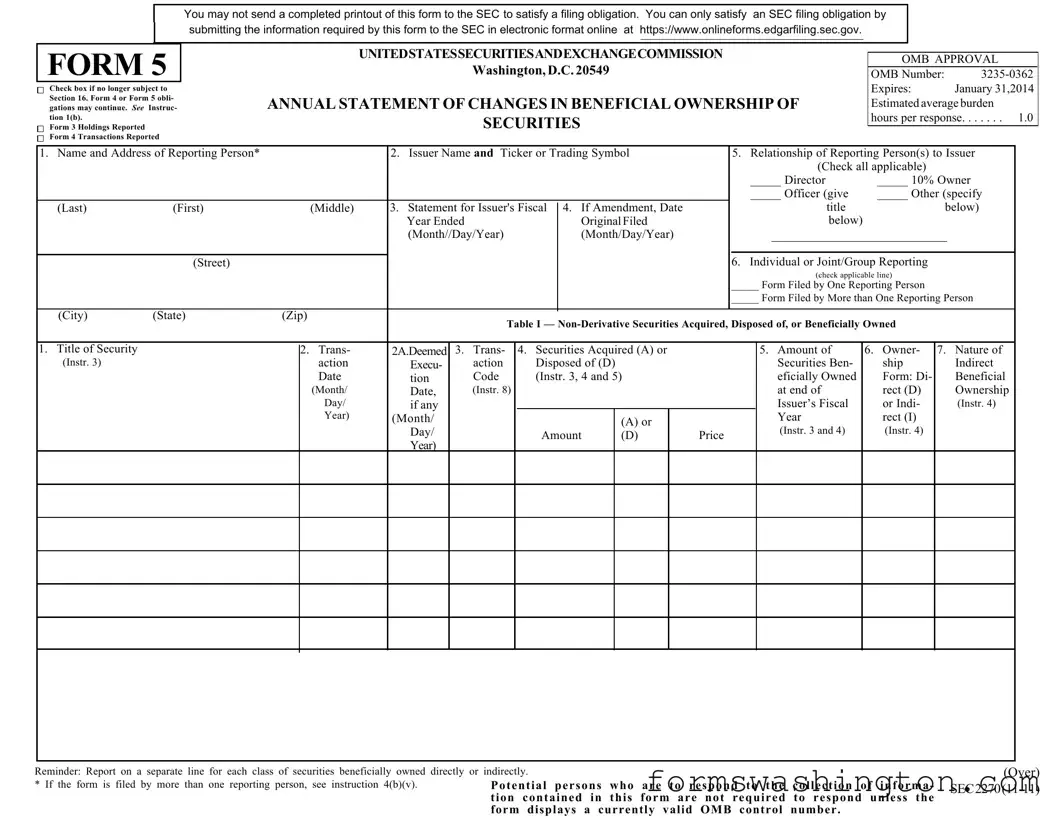The Washington 5 form serves as a crucial tool for reporting changes in beneficial ownership of securities, ensuring transparency and compliance with federal regulations. Designed for use by individuals with specific relationships to a company—such as directors, officers, or significant shareholders—this form captures vital information regarding both non-derivative and derivative securities. It requires details like the names and addresses of reporting persons, the issuer’s name and ticker symbol, and the fiscal year-end date. Additionally, the form differentiates between securities acquired or disposed of, and it mandates that all transactions be reported accurately to maintain the integrity of the financial markets. Importantly, this form must be submitted electronically through the SEC’s designated online platform, emphasizing the shift toward digital compliance. Notably, individuals may check a box indicating they are no longer subject to Section 16 obligations, which can streamline the reporting process. With clear instructions and structured tables, the Washington 5 form aims to facilitate straightforward reporting while reinforcing the accountability of those who hold significant positions in publicly traded companies.
